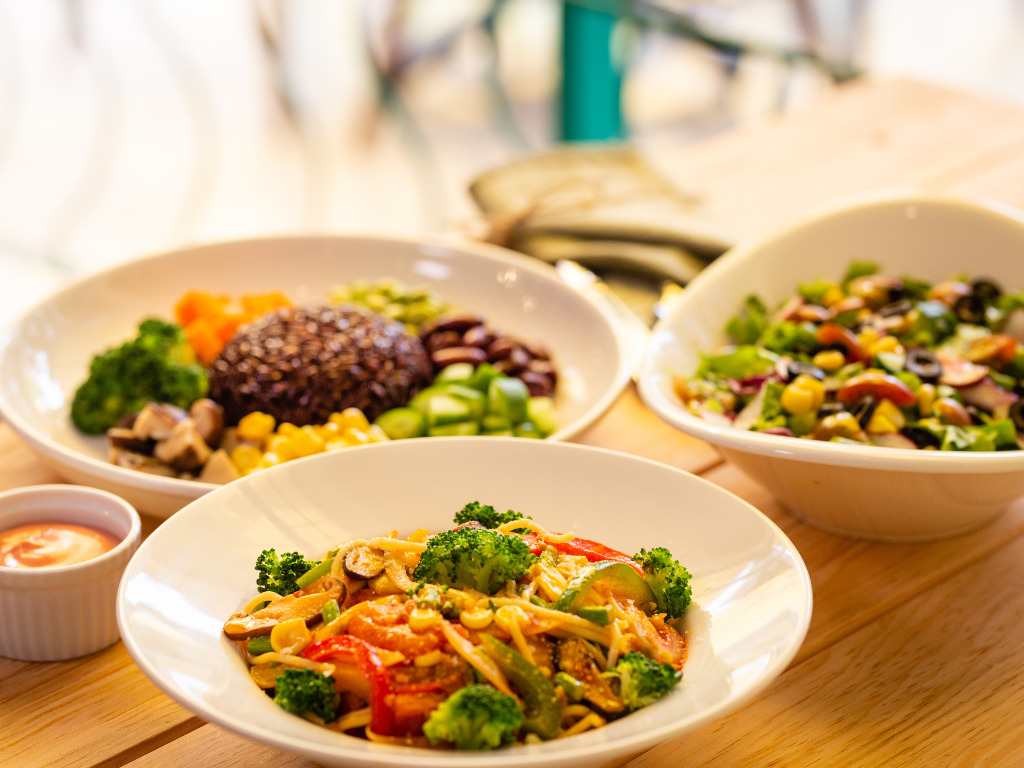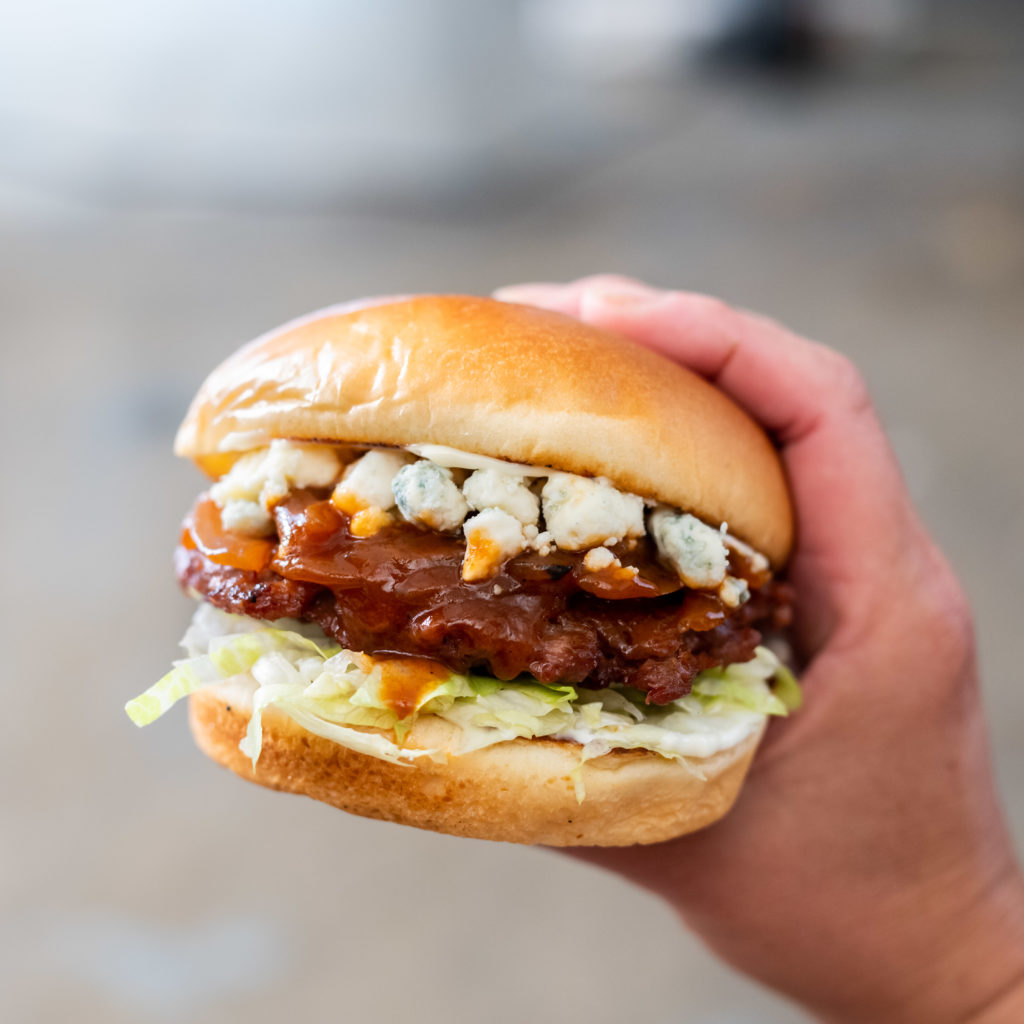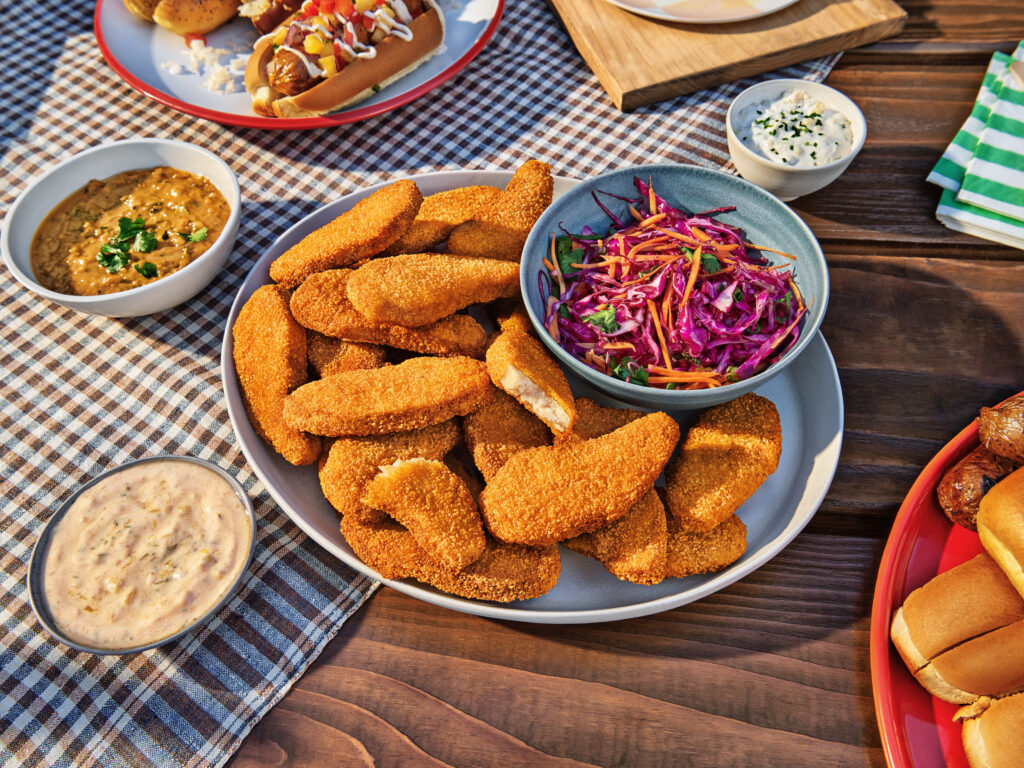6 Mins Read
A new study from research group Rethink Priorities explores how different combinations of menu options influence people’s choices of meat-free dishes, plant-based meals and conventional chicken and fish. Here are the key takeaways.
Researchers used data from previously published research exploring how people choose meat-free meals on menus – in that study, University of Göttingen students were asked to pick a meal from five options in 26 hypothetical menus, with the help of images and descriptions of real dishes available at restaurants.
Another recent study of 2,000 people published data showing that dining decisions are increasingly causing stress for younger Americans, with nearly one-third experiencing ‘menu anxiety’ when ordering at restaurants. Generation Z participants exhibit widespread concern for the environment and this can be reflected in anxiety around dining choices.
What is clear is that sustainability messaging on menus works. Multiple studies from around the world agree that it is successful in getting more diners to order low-carbon plant-based meals.
In an interview with Green Queen, Food for Climate League founder and food culture expert Eve Turow-Paul through the non-profit’s research projects, “we have been able to show large foodservice operators that small changes to menu language can dramatically impact consumer choice and drive sustainable food choices, without compromising consumer satisfaction.”
The Rethink study, authored by Sagar Shah and Jacob R Peacock, explored the association between people choosing a meat-free option based on how the menu was designed. Here are the key takeaways:
1) Provide at least three or more meat-free dishes

Researchers found that people are more likely to select meatless meals when there are three meat-free options (66%) on the menu, compared to when there are only two (54%). So the idea is to provide a wider range of menu options to entice diners to select plant-based dishes.
Research undertaken by the World Resources Institute confirms as much. The researchers presented meat-eaters with menus that had different amounts of meat and vegetarian dishes. Menus were composed of either 25% (menu A), 50% (menu B) or 75% vegetarian dishes (menu C), and participants were asked to make hypothetical choices about what dishes they would order. The results showed that offering more vegetarian food choices significantly encouraged sustainable food choices. Participants who normally ate meat only shifted their choice to vegetarian when these dishes made up 75% of the menu, but not when menus were equally meat and vegetarian, or when menus were 75% meat. In fact, the likelihood of a participant choosing a vegetarian dish was almost three times greater when the menu was 75% vegetarian compared to when the menu was only 50% vegetarian.
2) Don’t worry too much about using plant-based meats

The researchers found that meat-free selections were not significantly associated with the presence of meat analogues on a menu, albeit still resulting in a higher share. One caveat? The researchers noted that the study didn’t feature “very prominent meat analogues”, so the absence of a correlation can’t be credibly used to claim that high-quality plant-based meat has an important role in reducing meat consumption.
3) Avoid naming tofu in dishes

The researchers first defined plant-based meat analogues as dishes clearly trying to mimic the texture of conventional meat, but they were unsure if this was the best approach. So they repeated the analysis thrice. The first time included dishes that have meat-related names (like vegetarian schnitzel), the second trial included tofu, and the third combined the two. The researchers found that if tofu was included in a smaller range of options, people would be less likely to choose a meat-free dish.
4) Say no to poultry and seafood on your menu

The one area where the selection of meat-free options decreases is when there are what the authors describe as “small-bodied animals” on the menu – namely poultry and fish. Menus containing no fish or chicken option saw meat-free adoption of 64%, compared to 62% for menus with one chicken or fish dish, and 52% for those with two such food options.
The researchers say this highlights “the potential for welfare losses from substitution towards small-bodied animals from menu changes as well as shifts in consumer preferences”.
Concluding the study, the authors highlighted the need for further research on the most effective way to encourage meat-free meal selection: “It remains an open question whether, at the margin, it would be more cost-effective to advocate for more menu options featuring meat-analogues specifically, or for more meat-free options of any kind.”
Add ‘High impact’ climate labels to reduce beef orders say Johns Hopkins researchers
A Johns Hopkins Bloomberg School of Public Health study published last year found that the addition of climate impact labels on fast food menus had a “strong effect” on diners’ choices with the researchers concluding that both high and low climate impact labels led to a substantial decline in carbon-intensive red meat selections among the more than 5,000 participants involved in the US-based study.
“Menu labelling, particularly labels warning that an item has high climate impact, can be an effective strategy for encouraging more sustainable food choices in a fast food setting,” explains lead author and Associate Professor Julia Wolfson, PhD.
Restaurants are often scared to take menu risks but they pay off
Austin-based non-profit Planted Society works with city restaurants to help them to add more plant-based dishes on their menus including organising campaigns like ‘Plant Based for the Planet Challenge’, whereby local restaurants promote a variety of activations from free coffees with plant-based meals to eliminating plant-based milk surcharges and chefs creating special daily meat-free dishes.
Founder Britty Mann told Green Queen in an interview that it’s not that hard for restaurants to add vegan menu items, but “it’s really just scary for businesses to take risks” adding that “chefs express the same fears that we hear from friends and family: it’s too expensive, I don’t have time, it’s not going to stick, I’ll lose the respect of people I like and if it’s not ‘broke, why fix it?”
Planted works with partners to show that adding plant-based dishes “can actually be part of a supply-chain-centred business strategy that can help lower their food costs, empower their kitchen staff, attract new customers and gain the respect of the community.”
Brand consultancy Fuze just released a guide for restaurants titled ‘Greener Menus, Bigger Profits: Plant-Based Strategies for Restaurants’ with tips on how to position plant-based dishes on their menus. Suggestions include blending plant-based items with other menu offerings rather than having them in a stand-alone section, being subtle and discreet about labelling dishes ‘vegan’ or ‘vegetarian’, avoiding terms like ‘meatless’ embracing comfort food preparations and emphasizing health benefits and nutritional information.
With additional reporting and research by Sonalie Figueiras.



